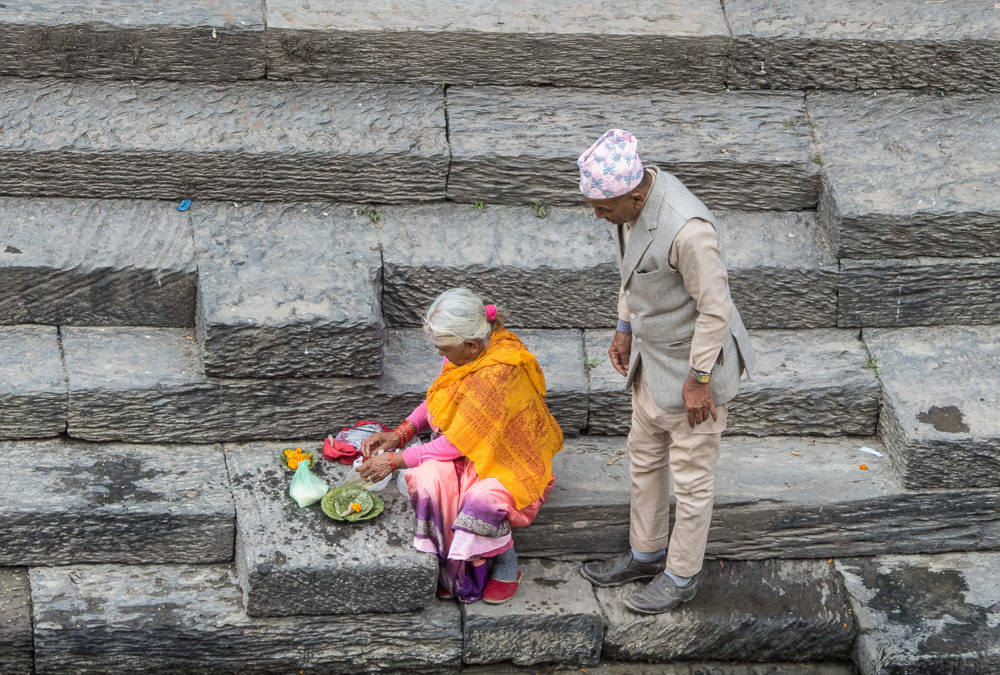We thought we were just going on a service project to help to clean up the Bagmati River. The Big Cleanup had been every Saturday for the previous 231 weeks moving around each week to a different section. Various challenges from a lack of infrastructure (from 20 years with no government), population explosion in the Valley and the debris from the 2015 earthquake have left the Bagmati River in need of attention. We had been asked to show support and participate and we happily accepted.

We didn’t know we would end up at one of Nepal’s holiest sites. As one guidebook puts it Pashupatinath is “a Hindu pilgrimage site, a smoky and stirring melee of temples, statues, pilgrims and half-naked holy men.” That and more.
Upon arrival, we found the cleanup project only had enough gloves and equipment for three, so some started picking up trash along an assigned river section and the others went to explore more about culture. We surely did that.
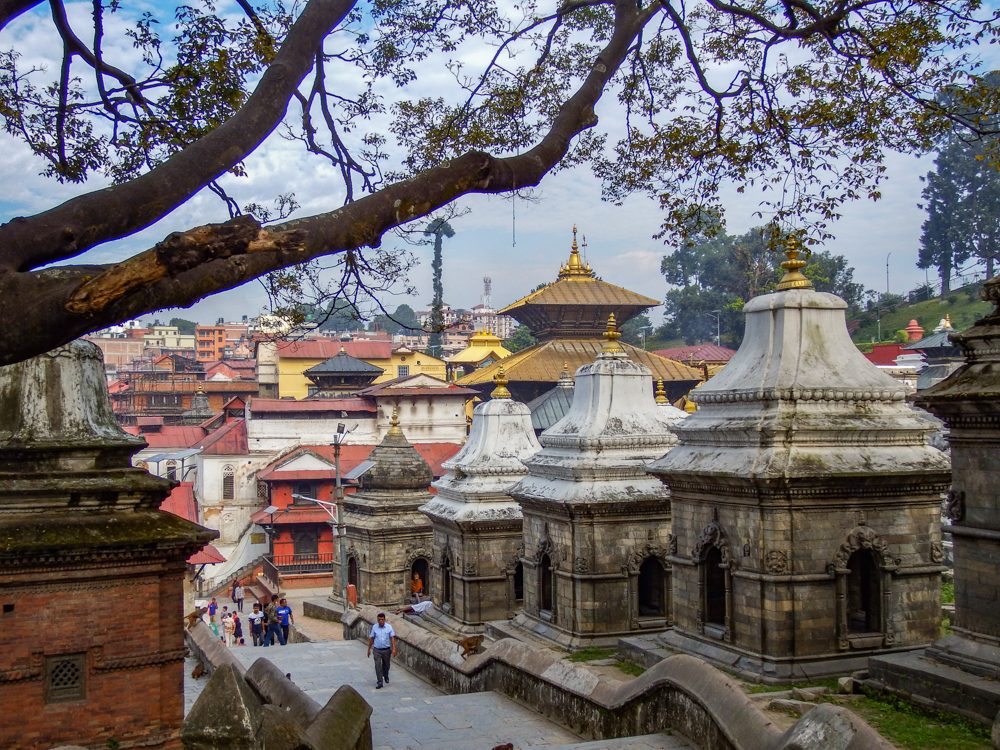
First was a terraced section of family-sized temples all erected to honor Shiva, the Hindu protectress. The area was also home to bazillions of monkeys many of which had new babies clinging to them. There were plenty of gang fights and barred teeth and antics to watch and avoid.
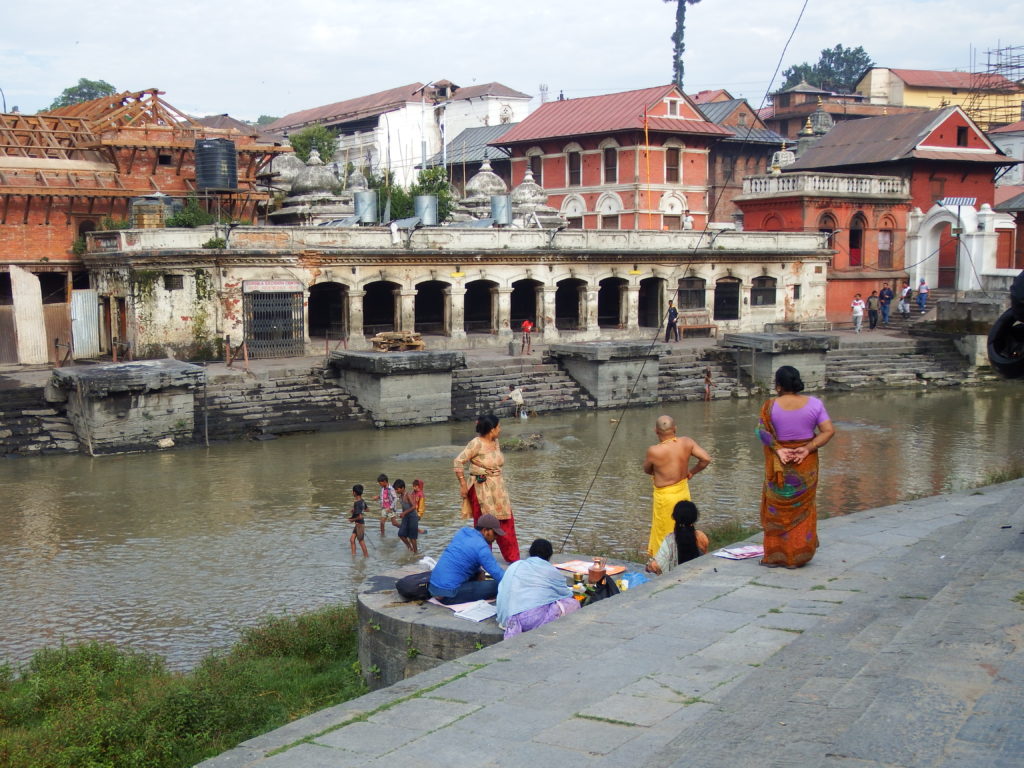
Priests and family offerings 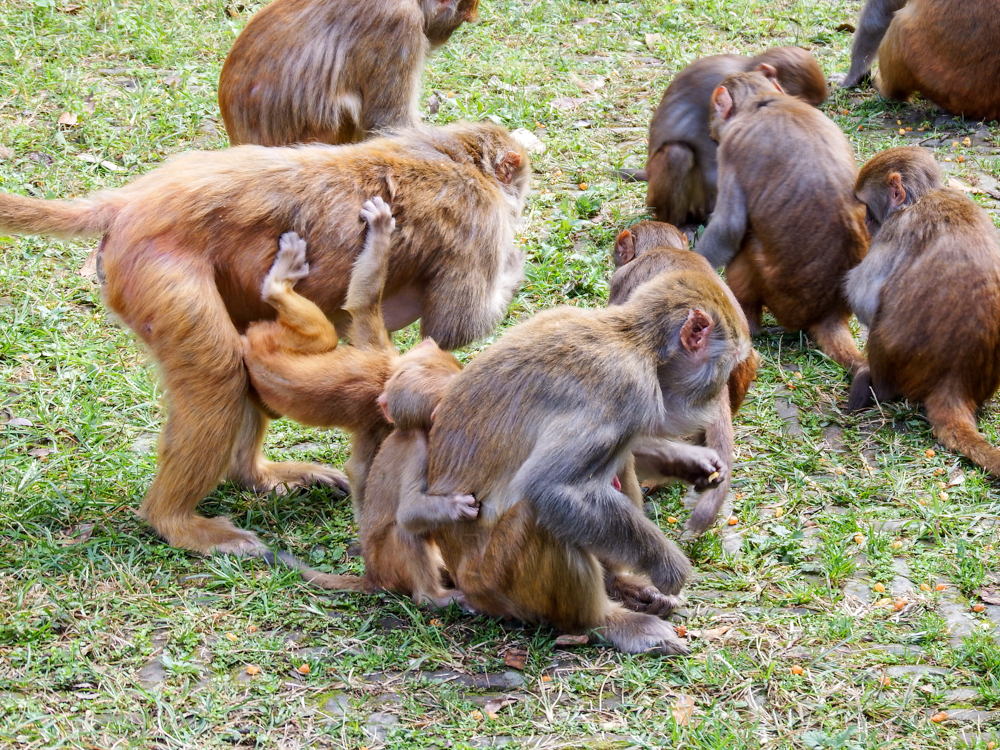
Back down the hill we walked along the elevated embankment as the river was headed east toward a steep ravine. Below us along the southern bank of the river was a lower level with periodic circular platforms for monks to meet grieving families wanting a ceremonial remembrance. A series of concoctions with floating leaves and rice balls and colorful paints is put together by the monk while the family sits in a circle and at some point,it is ready to be placed in the river to float away westward to eventually join the sacred Ganges River far away in India.
Further below is the river itself and, on this side, a fair number of the cleanup crews are grabbing garbage from the nooks and crannies of the terraces.
It was the other side that kept us mesmorized. Initially, we were drawn to the temples on the top of the ridge with their gilded chortens atop rounded domes in a jumbled skyline. Through a large alley we could glimpse a central square and I was going to head across the pedestrian bridge to explore more when I saw the water-level activities and stopped in my tracks.
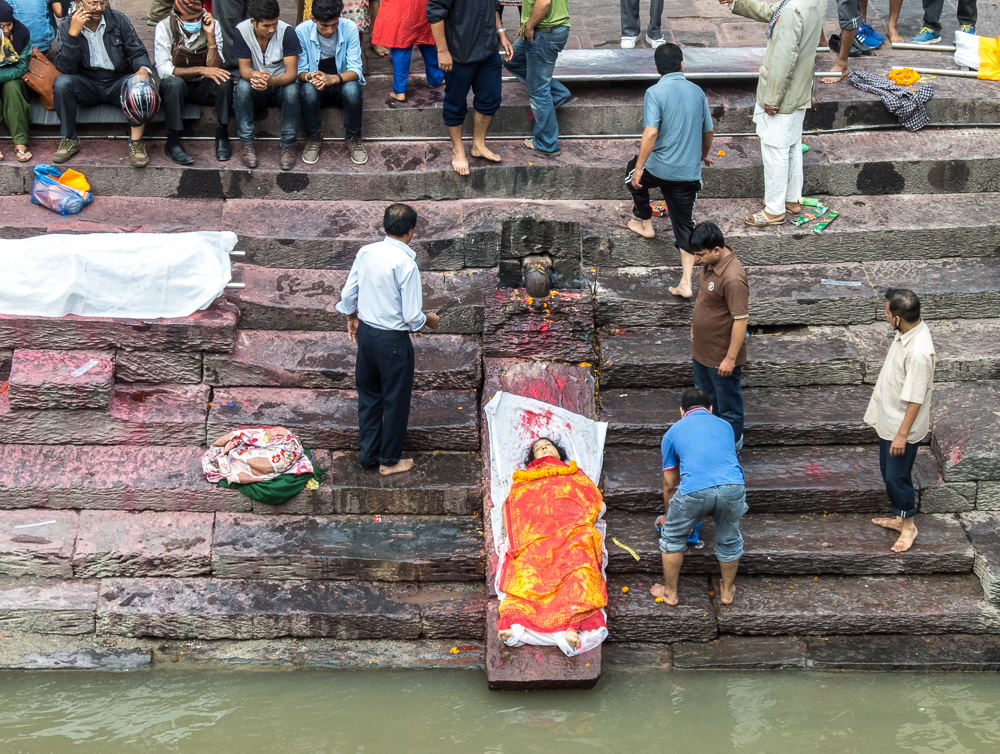
A family of hearty men was lowering a saffron draped gurney to a built-in stone slab perpendicular to the river. They placed their mother on the slab with her feet toward the river and began a series of specific motions. First, uncover her feet and head and hands in a clockwise order. Then using their hands as cups, pour holy river water over her feet and hands and onto her lips. A different family member draped large marigold garlands around her neck before another sprinkled bright red over her whole body virtually covering the saffron sheet with bright red. They again covered her feet and hands leaving the head open and lifted her back to the same level as we were to carry further up river about 100 yards to a waiting funeral pyre.
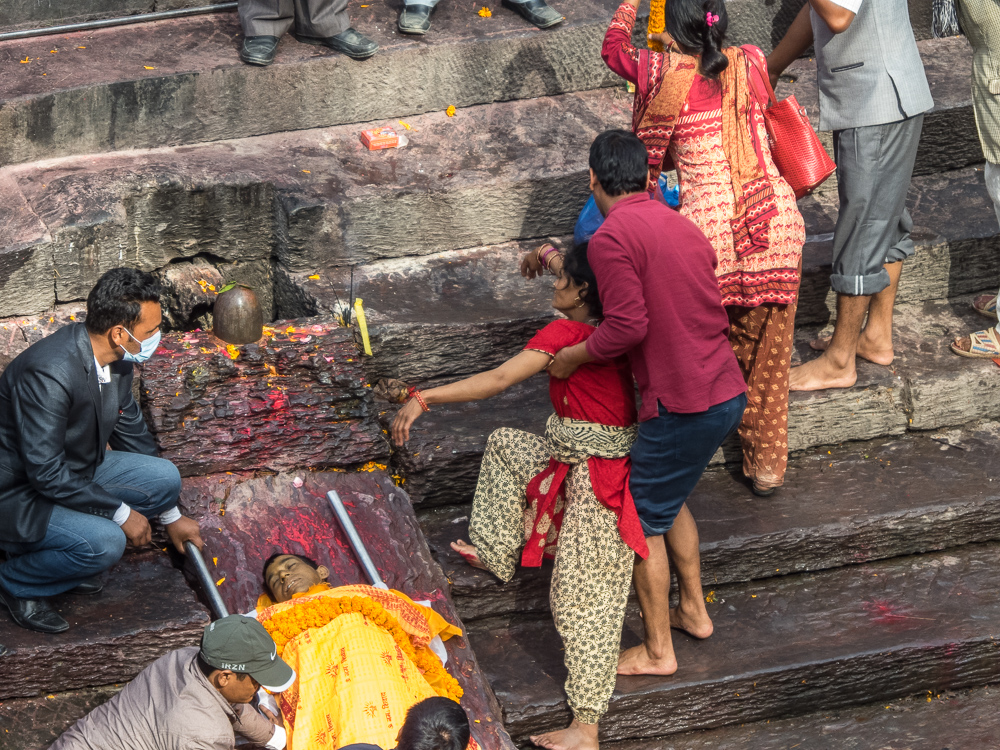
Just the minute they departed the stone slab, another family began to bring their loved one down to the river bank. And it appeared two more were in various stations of the ritual process. Some of us were profoundly moved and overcome with emotion, especially when it became obvious the second group was a young man whose wife was physically collapsing trying to do her duty to place the water on him and her wailing could be heard plaintively echoing off the terraces.
For me, I found it a moving and historically public ceremony. It honored the dead to be in that place. I have seen many funerals and this was comparable in ritual to what must seem bizarre about our own practices. The centuries-old ceremonies that have taken place here have given it a much-more-then-architectural aura. Some call that holy. It was palpable.
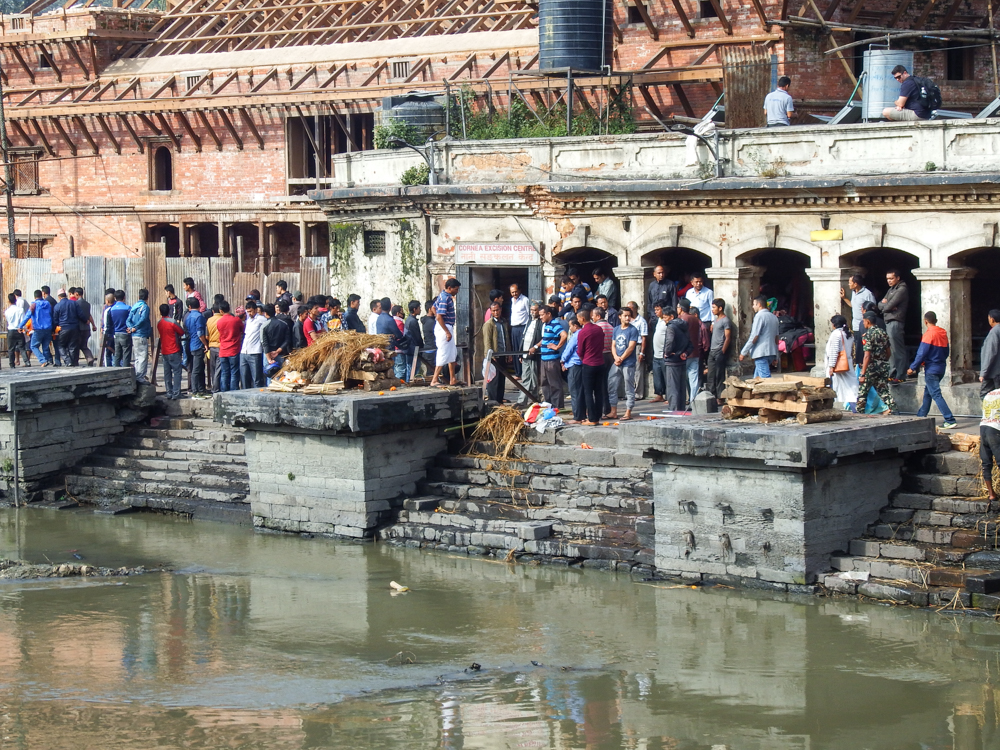
The group from the first service placed their mother on the top of the pyre and a specially designated man wearing a white apron carefully placed what looked like palm fronds to cover the body. A family member was handed the prepared flame and lit one side before passing it to another for another side until a flame began to quietly engulf the structure while the family silently watched.
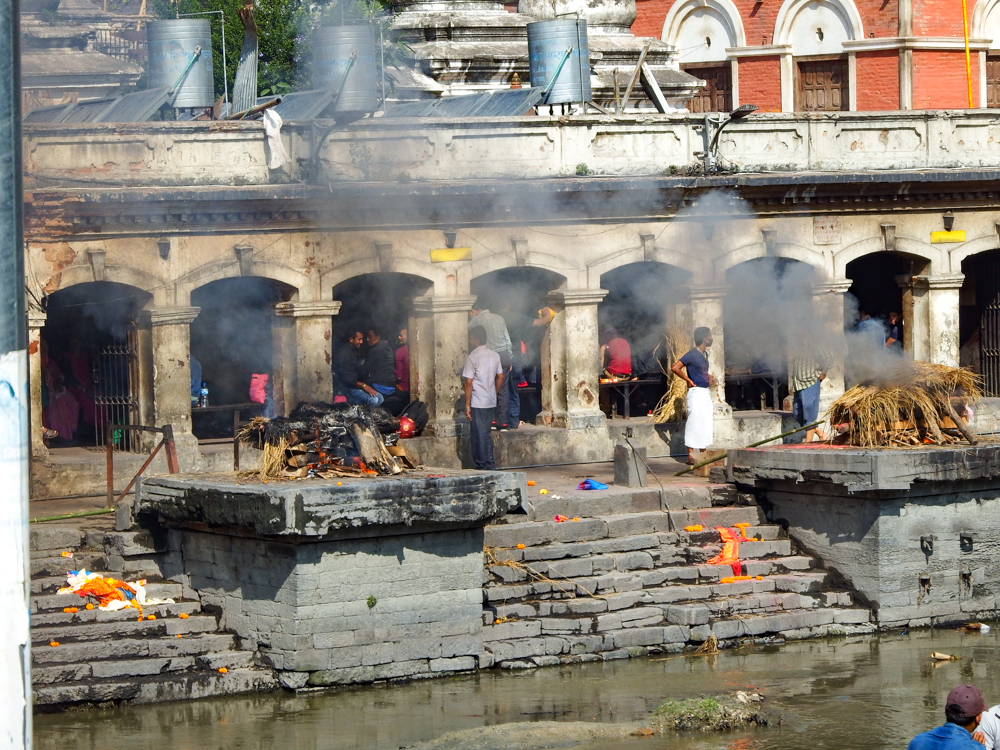
We watched these rituals multiple times. Transfixed and touched. Just as the wind shifted and big clouds of black smoke from the three burning fires began to affect our breathing, it was time for departure. I felt honored to have been witness to the end of these lives.
We’re taking a small group to Nepal in October 2019. If you’re interested, please send us a note and we’ll send you some details.

